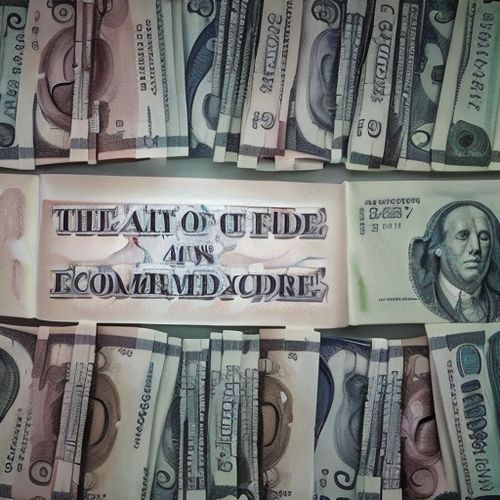The role of central banks in shaping economic outcomes through monetary policy is both complex and pivotal. As the primary architects of a nation's monetary framework, central banks wield tools that influence interest rates, money supply, and overall financial stability. Their decisions ripple through economies, affecting everything from inflation to employment levels. Understanding how these institutions operate provides insight into the delicate balance they maintain between fostering growth and preventing economic overheating.
At the heart of monetary policy lies the manipulation of interest rates. By adjusting benchmark rates such as the federal funds rate in the United States or the refinancing rate in the Eurozone, central banks directly alter borrowing costs for commercial banks. When economic activity slows, a reduction in rates encourages businesses and consumers to take loans, spurring investment and consumption. Conversely, when inflation threatens to erode purchasing power, higher rates discourage excessive borrowing, cooling down demand. This seesaw mechanism requires precise timing—acting too late or too aggressively can exacerbate economic cycles rather than smooth them.
Beyond interest rate adjustments, central banks engage in open market operations—buying or selling government securities to regulate liquidity. Quantitative easing (QE), a strategy deployed after the 2008 financial crisis, saw central banks purchasing long-term bonds to inject money directly into struggling economies. While QE stabilized markets during emergencies, its prolonged use risks distorting asset prices and creating dependency on cheap credit. The unwinding of such programs demands equal caution; sudden withdrawals of liquidity can trigger market volatility as witnessed during the "taper tantrum" of 2013.
Forward guidance has emerged as another critical tool in recent decades. By communicating future policy intentions—such as keeping rates low for extended periods—central banks shape market expectations preemptively. Clear guidance reduces uncertainty but hinges on credibility; if markets doubt a bank’s commitment or capability to follow through, its words lose potency. The European Central Bank’s struggle to align communication with divergent eurozone economies underscores this challenge.
Exchange rate interventions occasionally complement these measures, especially for export-driven economies. Selling or hoarding foreign reserves allows central banks to influence currency values indirectly. However, in an era of globalized capital flows, such tactics often provoke retaliatory measures or speculative attacks unless coordinated internationally. Switzerland’s abrupt abandonment of the euro peg in 2015 demonstrated how unsustainable artificial currency valuations can become.
The interplay between monetary policy and inflation targeting deserves particular attention. Most modern central banks explicitly aim for 2% annual inflation—a compromise between avoiding deflationary traps and maintaining price stability. Yet rigid adherence to this benchmark can blind policymakers to structural shifts like technology-driven price declines or supply chain disruptions. Japan’s decades-long battle with deflation proves that textbook solutions falter when consumer psychology and demographic trends override monetary stimuli.
Critically, central banks must navigate the treacherous waters of political pressures while maintaining operational independence. Elected leaders frequently demand accommodative policies during election cycles, risking inflationary spirals. The erosion of the Turkish central bank’s autonomy under President Erdoğan’s interference offers a cautionary tale of how politicized monetary decisions can trigger currency collapses and capital flight.
As digital currencies and cryptocurrencies redefine financial landscapes, central banks face unprecedented challenges. The prospect of central bank digital currencies (CBDCs) could revolutionize monetary policy implementation by enabling direct transactions between citizens and the central bank. Yet this also raises privacy concerns and threatens the traditional banking intermediary model. How institutions like the Federal Reserve or the People’s Bank of China adapt will shape monetary policy’s effectiveness in coming decades.
Ultimately, central banking remains as much art as science—a continuous calibration of theoretical models against real-world contingencies. The COVID-19 pandemic response highlighted this duality: massive liquidity injections prevented economic collapse but later contributed to inflationary surges that policymakers struggled to contain. In an interconnected world where capital moves at lightning speed and crises emerge unpredictably, central banks must remain both steadfast in their mandates and agile in their tactics. Their success or failure in this balancing act determines not just financial market stability but the economic well-being of billions.

By Samuel Cooper/Apr 10, 2025

By Grace Cox/Apr 10, 2025

By Emily Johnson/Apr 10, 2025

By John Smith/Apr 10, 2025

By Ryan Martin/Apr 10, 2025

By Ryan Martin/Apr 10, 2025

By Joshua Howard/Apr 10, 2025

By Eric Ward/Apr 10, 2025

By Christopher Harris/Apr 10, 2025

By Sophia Lewis/Apr 10, 2025

By George Bailey/Apr 10, 2025

By Michael Brown/Apr 10, 2025

By Joshua Howard/Apr 10, 2025

By Lily Simpson/Apr 10, 2025

By Emma Thompson/Apr 10, 2025

By William Miller/Apr 10, 2025

By Samuel Cooper/Apr 10, 2025

By George Bailey/Apr 10, 2025